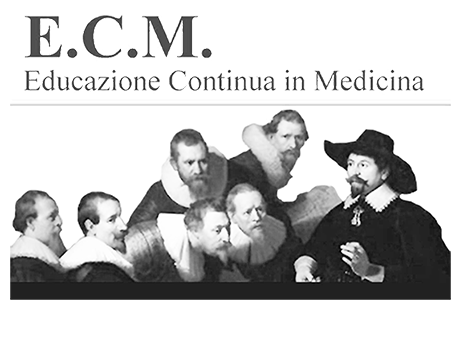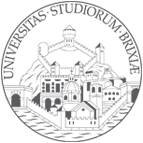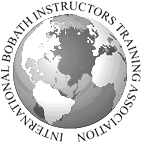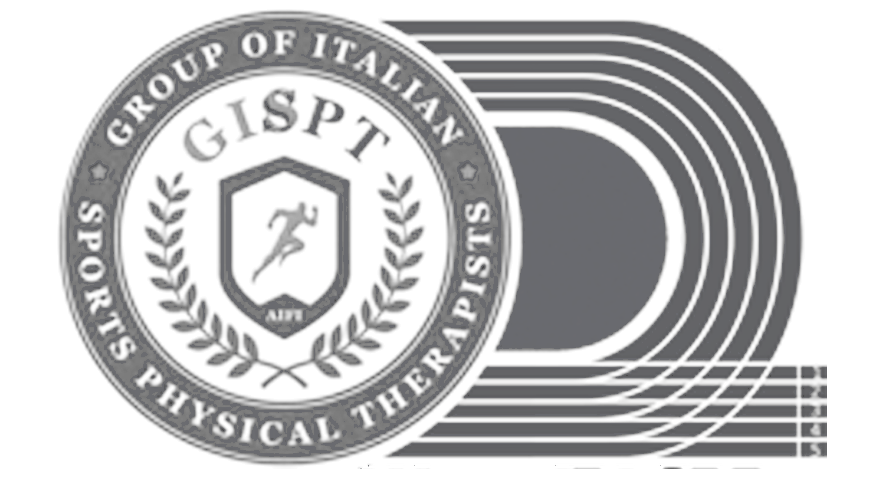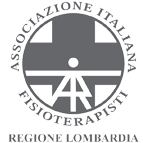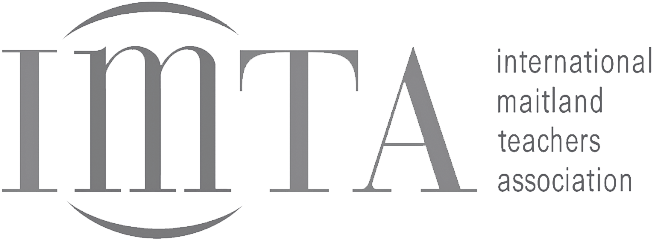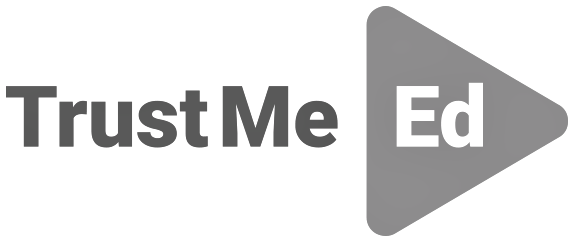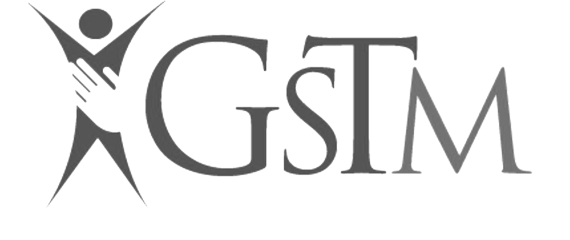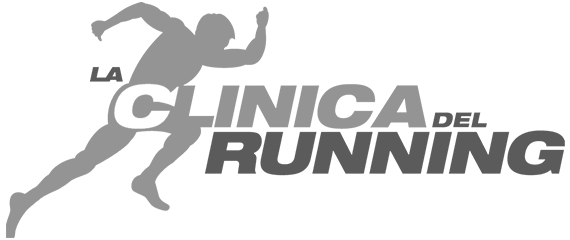March 30, 2019
EM119: Maitland Concept Level 1
-
Lisa MantovaniPt, MSc, OMPT, IMTA® Teacher
The Maitland Concept® is based on a detailed assessment of neuro-musculoskeletal disorders; the continuous evaluation process allows the operator to always be in control of the result of the applied techniques. Besides joints and muscular bands, the Maitland Concept® also gives importance to all the aspects concerning the functionality of the peripheral and central nervous system.
These considerations based on the latest neurobiological and neurodynamical knowledges included in a biopsychosocial model,make this method one of the most advanced concept.
The total time spent between teacher-student-patients is 160 hours.
Theory: 37 hours, practice: 105 hours, examination and treatment of the patient by the participants: 11 hours, demonstrations with the patient by the teacher: 7 hours.
THEORY: Introduction to the 4-hour Maitland Concept, 3-hour movement diagram, general subjective examination, lumbar, cervical, thoracic, sacro-iliac, temporomandibular, shoulder, elbow, wrist and hand complex, hip, knee and foot complex 13 hours, general physical examination 1 hour, annotations 2 hours, instability against hypermobility 2 hours, spinal traction 1 hour, osteoarthritis and pathologies from overuse 2 hours, aspects for the home program 1 hour, selection of techniques 4 hours, evaluation aspects and 4 hours revaluation.
PRACTICE: Procedures for the objective examination: 35 hours for musculoskeletal examination of the rachis excluding the combined movements and the differentiation of the functional demonstration, 37 hours for the peripheral joints excluding the differentiation of the functional demonstration. Treatment procedures including treatment progression:
- vertebral - treatment techniques with intervertebral accessory movements, spinal traction, cervical rotation, cervical lateroflexion, lumbar rotation, sacroiliac (15 hours).
- peripheral joints with accessory and physiological movements used in degrees and in different positions physiological according to teaching techniques (16 hours).
- home program (2 hours).
In collaboration with:

Intended for
Payments
- Deposit €700.00 + VAT 22% (€854.00) within 7 days from the registration
- 2nd deposit €600.00 + VAT 22% (€732.00) by date January 10, 2019
- 3rd deposit €600.00 + VAT 22% (€732.00) by date March 23, 2019
- Balance €500.00 + VAT 22% (€610.00) by date May 28, 2019
Calendar
II Week: 4-8 June 2019;
III Week: 5-9 October 2019;
IV Week: 19-23 January 2020
language
The total time spent between teacher-student-patients is 160 hours.
Theory: 37 hours, practice: 105 hours, examination and treatment of the patient by the participants: 11 hours, demonstrations with the patient by the teacher: 7 hours.
THEORY: Introduction to the 4-hour Maitland Concept, 3-hour movement diagram, general subjective examination, lumbar, cervical, thoracic, sacro-iliac, temporomandibular, shoulder, elbow, wrist and hand complex, hip, knee and foot complex 13 hours, general physical examination 1 hour, annotations 2 hours, instability against hypermobility 2 hours, spinal traction 1 hour, osteoarthritis and pathologies from overuse 2 hours, aspects for the home program 1 hour, selection of techniques 4 hours, evaluation aspects and 4 hours revaluation.
PRACTICE: Procedures for the objective examination: 35 hours for musculoskeletal examination of the rachis excluding the combined movements and the differentiation of the functional demonstration, 37 hours for the peripheral joints excluding the differentiation of the functional demonstration. Treatment procedures including treatment progression:
- vertebral - treatment techniques with intervertebral accessory movements, spinal traction, cervical rotation, cervical lateroflexion, lumbar rotation, sacroiliac (15 hours).
- peripheral joints with accessory and physiological movements used in degrees and in different positions physiological according to teaching techniques (16 hours).
- home program (2 hours).
DETAIL OF THE FIRST WEEK
First Day
08.30 Registration for participants
09.00 Objectives of the course
10.00 Introduction to the Maitland concept
11.00 Palpatory anatomy
12.00 Introduction to the principles of the C / O (Subjective examination)
13.00 Lunch break
14.00 Lumbar subjective examination (C / O Lx) and principles of subjective examination
15.00 Degree of movement
16.00 Practice lumbar accessory movements
17.00 Principles of physical examination
18.30 Conclusion of works
Second Day
08.30 P / E LX: Lumbar physical examination, Inspection and active movements
09.00 Registration of physical examination data
10.00 Neurological examination
11.00 Theory of neurodynamics
12.00 Practice Neurodynamics: SLR, PNF, PKB, Slump
13.00 Lunch break
14.00 Lumbar palpation
15.00 PAIVMs: passive intervertebral accessory movements
16.00 Practice degrees of movement
17.00 Introduction of the movement diagram
18.30 Conclusion of works
Third day
08.30 Lumbar physical examination: self-treatment and patient education
09.00 Anca subjective examination
10.00 Anca physical examination
11.00 Inspection, active movements, tests if necessary
12.00 Introduction of hip treatment
13.00 Lunch break
14.00 Physical passive movements of the hip
15.00 Passive movements of hip accessories
16.00 Continuation of the movement diagram
17.00 Hip treatment progression
18.30 Conclusion of works
Fourth Day
08.30 Continuation of the Anca
09.00 Cervical subjective examination (C / O Cx)
10.00 Continuation of the principles of subjective examination
11.00 Planning of the cervical physical examination
12.00 Introduction of cervical physical examination
13.00 Lunch break
14.00 Treatment of a patient by the teacher in a collective session
15.00 Introduction to Clinical Reasoning
16.00 Continuation of Cervical physical examination: inspection, functional demonstration and differentiation
17.00 Cervical active movements and tests if necessary
18.30 Conclusion of works
Fifth Day
08.30 Cervical physical examination
09.00 Neurological examination
10.00 Neurodynamics: ULNT1 (neurodynamic test for the upper limb 1)
11.00 Cervical palpation 12.00 Introduction of cervical accessory movements
13.00 Lunch break 14.00 PAIVMs C2-C7 cervical accessory movements C2-C7
15.00 Cervical treatment
16.00 ECM practice test
17.30 Last questions and conclusion of the course
SECOND WEEK
- Review of the concept, clinical reasoning
- C / O of the shoulder complex
- P / E of the shoulder complex, inspection, functional demonstration, active movements
- P / E of the shoulder complex, passive movements, movement diagram, "Quadrant" and "Locking" of the shoulder
- Gleno-humeral accessory movements, acromion-humeral, acromioclavicular, scapulothoracic, 1st rib
- Progression of Rx to the shoulder, self-treatment of the shoulder
- Differentiation of the upper cervical and antero-posterior movements of the Cx
- Passive physiological intervertebral movements (PPIVM`s) Lx
- Lumbar rotation, lumbar traction
- PPIVM`s cervical (Cx8 Cx2-Cx7 and Cx7-Tx4); Rx Lateroflexion and Cx rotation; Cervical self-treatment
- C / O cage Toracica (Tx)
- P / E Tx, functional demonstration inspection, active movements, neurological and Neurodynamic examination, palpation and accessory movements, self-treatment Tx
- Examination and treatment of patients by the participants with supervision of the teacher (from the 3rd to the 5th day)
- Complete the clinical reasoning forms THIRD WEEK _ C / O sacro-iliac articulation (ASI)
- P / E ASI - Introduction to pain mechanisms
- RxASI
- Revisions Shoulder, Quadrant, accessory movements
- C / O knee and P / E knee
- RX knee - C / O and P / E Foot
- Rx Foot
- Demonstration of an exam and treatment to the patient by the teacher of the course
- Examination and treatment of patients by the participants with supervision of the teacher (from the 2nd to the 5th day)
- Complete the clinical reasoning form FOURTH WEEK - C / O, P / E and Elbow Rx
- The role of the Maitland concept in medicine and rehabilitation
- Practical work on various differentiations
- C / O temporomandibular joint (ATM) _P / EeRxATM
- Vertebral column reviews - Revisions of the Cx and PPIVM`s Occ-Cx2
- C / O and P / E elbow
- Elbow Rx - C / OeP / Emano
- Rx hand
- Demonstration of an exam and treatment to the patient by the teacher of the course
- Examination and treatment of patients by the participants with supervision of the teacher (from the 2nd to the 5th day)
- Complete the clinical reasoning form Evaluation of learning
THIRD WEEK
- C / O sacro-iliac articulation (ASI)
- P / E ASI
- Introduction to pain mechanisms
- RxASI - Revisions Shoulder, Quadrant, accessory movements
- C / O knee and P / E knee
- RX knee
- C / O and P / E Foot
- Rx Foot
- Demonstration of an exam and treatment to the patient by the teacher of the course
- Examination and treatment of patients by the participants with supervision of the teacher (from the 2nd to the 5th day)
- Complete the clinical reasoning form
FOURTH WEEK
- C / O, P / E and Elbow Rx
- The role of the Maitland concept in medicine and rehabilitation
- Practical work on various differentiations
- C / O temporomandibular joint (ATM)
- P / EeRxATM
- Vertebral column reviews
- Revisions of the Cx and PPIVM`s Occ-Cx2
- C / O and P / E elbow
- Elbow Rx
- C / OeP / Emano
- Rx hand
- Demonstration of an exam and treatment to the patient by the teacher of the course
- Examination and treatment of patients by the participants with supervision of the teacher (from the 2nd to the 5th day)
- Complete the clinical reasoning form
- Evaluation of learning
SCHEDULE
The total time spent between teacher-student-patients is 160 hours.
Theory: 37 hours, practice: 105 hours, examination and treatment of the patient by the participants: 11 hours, demonstrations with the patient by the teacher: 7 hours.
THEORY: Introduction to the 4-hour Maitland Concept, 3-hour movement diagram, general subjective examination, lumbar, cervical, thoracic, sacro-iliac, temporomandibular, shoulder, elbow, wrist and hand complex, hip, knee and foot complex 13 hours, general physical examination 1 hour, annotations 2 hours, instability against hypermobility 2 hours, spinal traction 1 hour, osteoarthritis and pathologies from overuse 2 hours, aspects for the home program 1 hour, selection of techniques 4 hours, evaluation aspects and 4 hours revaluation.
PRACTICE: Procedures for the objective examination: 35 hours for musculoskeletal examination of the rachis excluding the combined movements and the differentiation of the functional demonstration, 37 hours for the peripheral joints excluding the differentiation of the functional demonstration. Treatment procedures including treatment progression:
- vertebral - treatment techniques with intervertebral accessory movements, spinal traction, cervical rotation, cervical lateroflexion, lumbar rotation, sacroiliac (15 hours).
- peripheral joints with accessory and physiological movements used in degrees and in different positions physiological according to teaching techniques (16 hours).
- home program (2 hours).
DETAIL OF THE FIRST WEEK
First Day
08.30 Registration for participants
09.00 Objectives of the course
10.00 Introduction to the Maitland concept
11.00 Palpatory anatomy
12.00 Introduction to the principles of the C / O (Subjective examination)
13.00 Lunch break
14.00 Lumbar subjective examination (C / O Lx) and principles of subjective examination
15.00 Degree of movement
16.00 Practice lumbar accessory movements
17.00 Principles of physical examination
18.30 Conclusion of works
Second Day
08.30 P / E LX: Lumbar physical examination, Inspection and active movements
09.00 Registration of physical examination data
10.00 Neurological examination
11.00 Theory of neurodynamics
12.00 Practice Neurodynamics: SLR, PNF, PKB, Slump
13.00 Lunch break
14.00 Lumbar palpation
15.00 PAIVMs: passive intervertebral accessory movements
16.00 Practice degrees of movement
17.00 Introduction of the movement diagram
18.30 Conclusion of works
Third day
08.30 Lumbar physical examination: self-treatment and patient education
09.00 Anca subjective examination
10.00 Anca physical examination
11.00 Inspection, active movements, tests if necessary
12.00 Introduction of hip treatment
13.00 Lunch break
14.00 Physical passive movements of the hip
15.00 Passive movements of hip accessories
16.00 Continuation of the movement diagram
17.00 Hip treatment progression
18.30 Conclusion of works
Fourth Day
08.30 Continuation of the Anca
09.00 Cervical subjective examination (C / O Cx)
10.00 Continuation of the principles of subjective examination
11.00 Planning of the cervical physical examination
12.00 Introduction of cervical physical examination
13.00 Lunch break
14.00 Treatment of a patient by the teacher in a collective session
15.00 Introduction to Clinical Reasoning
16.00 Continuation of Cervical physical examination: inspection, functional demonstration and differentiation
17.00 Cervical active movements and tests if necessary
18.30 Conclusion of works
Fifth Day
08.30 Cervical physical examination
09.00 Neurological examination
10.00 Neurodynamics: ULNT1 (neurodynamic test for the upper limb 1)
11.00 Cervical palpation 12.00 Introduction of cervical accessory movements
13.00 Lunch break 14.00 PAIVMs C2-C7 cervical accessory movements C2-C7
15.00 Cervical treatment
16.00 ECM practice test
17.30 Last questions and conclusion of the course
SECOND WEEK
- Review of the concept, clinical reasoning
- C / O of the shoulder complex
- P / E of the shoulder complex, inspection, functional demonstration, active movements
- P / E of the shoulder complex, passive movements, movement diagram, "Quadrant" and "Locking" of the shoulder
- Gleno-humeral accessory movements, acromion-humeral, acromioclavicular, scapulothoracic, 1st rib
- Progression of Rx to the shoulder, self-treatment of the shoulder
- Differentiation of the upper cervical and antero-posterior movements of the Cx
- Passive physiological intervertebral movements (PPIVM`s) Lx
- Lumbar rotation, lumbar traction
- PPIVM`s cervical (Cx8 Cx2-Cx7 and Cx7-Tx4); Rx Lateroflexion and Cx rotation; Cervical self-treatment
- C / O cage Toracica (Tx)
- P / E Tx, functional demonstration inspection, active movements, neurological and Neurodynamic examination, palpation and accessory movements, self-treatment Tx
- Examination and treatment of patients by the participants with supervision of the teacher (from the 3rd to the 5th day)
- Complete the clinical reasoning forms THIRD WEEK _ C / O sacro-iliac articulation (ASI)
- P / E ASI - Introduction to pain mechanisms
- RxASI
- Revisions Shoulder, Quadrant, accessory movements
- C / O knee and P / E knee
- RX knee - C / O and P / E Foot
- Rx Foot
- Demonstration of an exam and treatment to the patient by the teacher of the course
- Examination and treatment of patients by the participants with supervision of the teacher (from the 2nd to the 5th day)
- Complete the clinical reasoning form FOURTH WEEK - C / O, P / E and Elbow Rx
- The role of the Maitland concept in medicine and rehabilitation
- Practical work on various differentiations
- C / O temporomandibular joint (ATM) _P / EeRxATM
- Vertebral column reviews - Revisions of the Cx and PPIVM`s Occ-Cx2
- C / O and P / E elbow
- Elbow Rx - C / OeP / Emano
- Rx hand
- Demonstration of an exam and treatment to the patient by the teacher of the course
- Examination and treatment of patients by the participants with supervision of the teacher (from the 2nd to the 5th day)
- Complete the clinical reasoning form Evaluation of learning
THIRD WEEK
- C / O sacro-iliac articulation (ASI)
- P / E ASI
- Introduction to pain mechanisms
- RxASI - Revisions Shoulder, Quadrant, accessory movements
- C / O knee and P / E knee
- RX knee
- C / O and P / E Foot
- Rx Foot
- Demonstration of an exam and treatment to the patient by the teacher of the course
- Examination and treatment of patients by the participants with supervision of the teacher (from the 2nd to the 5th day)
- Complete the clinical reasoning form
FOURTH WEEK
- C / O, P / E and Elbow Rx
- The role of the Maitland concept in medicine and rehabilitation
- Practical work on various differentiations
- C / O temporomandibular joint (ATM)
- P / EeRxATM
- Vertebral column reviews
- Revisions of the Cx and PPIVM`s Occ-Cx2
- C / O and P / E elbow
- Elbow Rx
- C / OeP / Emano
- Rx hand
- Demonstration of an exam and treatment to the patient by the teacher of the course
- Examination and treatment of patients by the participants with supervision of the teacher (from the 2nd to the 5th day)
- Complete the clinical reasoning form
- Evaluation of learning
